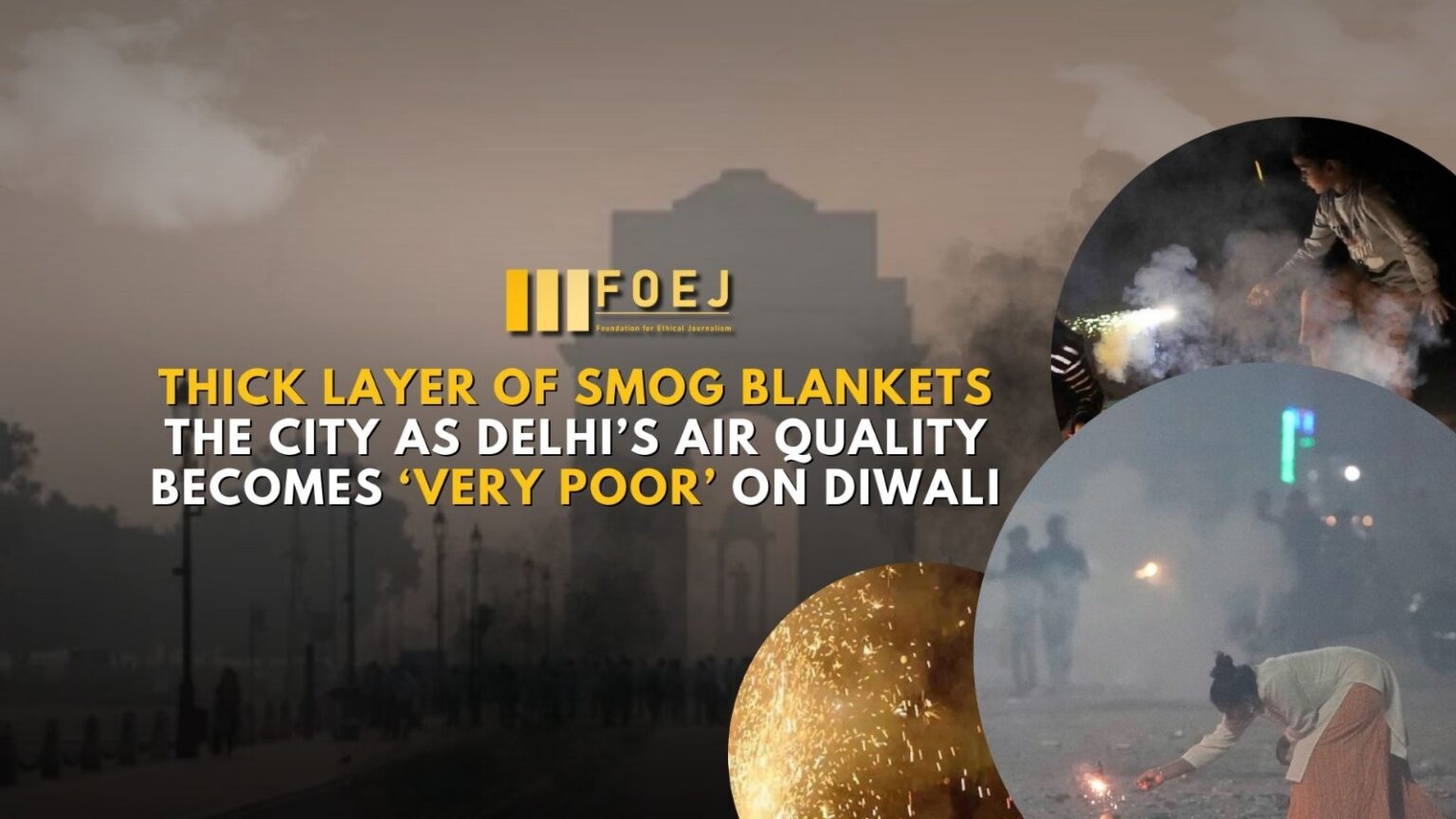Delhi and neighboring areas plunged to “very poor” air quality this morning. With a thick blanket of smog enveloping the parts of the city and its neighboring areas as the residents woke up for the celebration of Diwali. As per the real time data provided by the System of Air Quality and Weather Forecasting and Research (SAFAR), the AQI in the morning was 328, which falls under the “very poor” category.
An AQI between 0 and 50 is considered good, 51 and 100 satisfactory, 101 and 200 moderate, 201 and 300 poor, 301 and 400 very poor, 401 and 450 severe, and above 450 severe-plus.
Anand Vihar recorded the worst AQI at 419 under the “severe” category.
#WATCH | Delhi: A layer of smog engulfs the Anand Vihar area of the National Capital.
The Air Quality Index of Anand Vihar is 418 in the 'Severe' category as per the CPCB. pic.twitter.com/zcGVBOarZx
— ANI (@ANI) October 31, 2024The air quality remained “very poor” in other areas like Alipur, \Ashok Vihar, Aya Nagar, Bawana, Burari, Dwarka, IGI Airport (T3), Jahangirpuri, Mundka, Narela, Okhla, Patparganj, Punjabi Bagh, Rohini, RK Puram, Rohini, Vivek Vihar, Shadipur, Sonia Vihar, and Wazirpur.
Weather department officials have reportedly said that the city’s AQI levels are likely to improve after 11 am when the temperature will begin to rise and the wind speed is expected to gain strength.
As reported by the Indian Meteorological Department has forecasted that a clear sky will be there during the day with maximum temperature of 36 degree celsius and minimum of 21 degrees.
Mahesh Palawat, Chief Meteorologist at Skymet Weather Services, informed PTI that pollution levels in Delhi are expected to worsen around Diwali. This forecast is due to a shift in wind direction from south-southeast to north westerly, likely bringing smoke from stubble burning in nearby regions into the city. The combination of festival-related pollution and agricultural smoke may lead to a significant decline in air quality, exacerbating health risks for residents.
“If firecrackers also burst, the altered wind direction could further trap pollutants, worsening the air quality,” he said.
Measures In Delhi On Diwali
As reported by the Delhi Environment minister Gopal Rai has said that as many as 377 teams have been formed to enforce the ban on firecrackers across Delhi.
A senior Delhi Police officer reported that all deputy commissioners of police (DCPs) have been asked to form dedicated teams to ensure that firecrackers are not burst in their respective districts.
To combat rising pollution levels, authorities will reportedly implement daily mechanical sweeping and water sprinkling on designated roads, alongside strict dust control measures at construction and demolition sites.
Additionally, traffic personnel will be stationed at congestion hotspots, vehicle parking fees will be raised to dissuade private transport use, and extra bus and metro services will be introduced to encourage public transit. These efforts aim to mitigate pollution and improve air quality in the city during the high-risk Diwali period.









